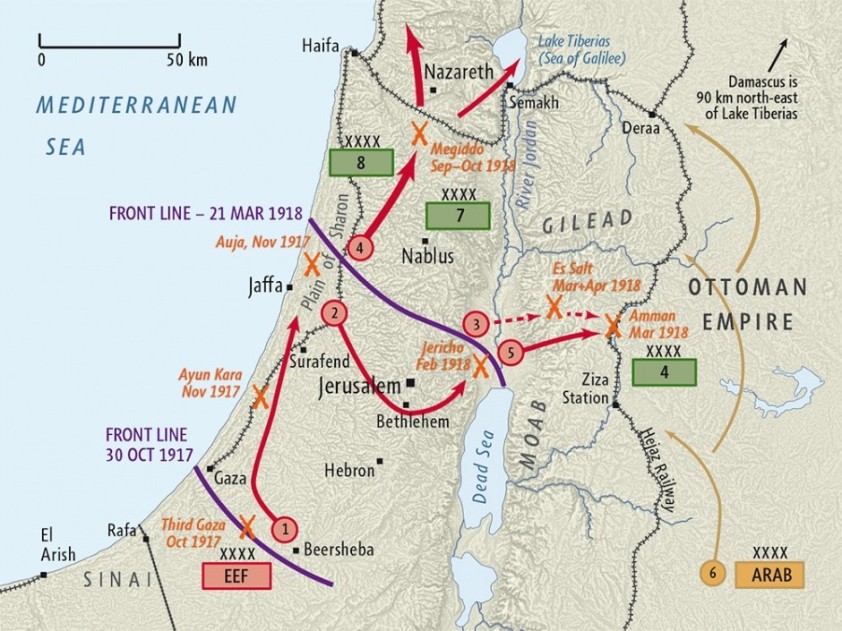from Palestine, Major Vecihi first describes the Ottoman
front line there in the winter of 1917-1918 and then the
rationale behind the formation of the Yıldırım Army Group
(YAG).//

Overall Situation Prior to the Retreat
After the fall of Jerusalem (9 December 1917), the battlefront
expanded disproportionately vis-a-vis our existing forces. Our front
stretched from Medina to the north, following the Hicaz railway line,
crossing south of the villages of Salat and Nablus and from there to
the south of Haifa on the coast of the Mediterranean Sea. The 7th and
8th Armies were on the west side of the Şeria (Jordon) River, which is
linked to Bahr-i Lut (The Dead Sea) and Lake Taberiye (Sea of
Galilee), while the 4th Army and the Medine Defense Force were on
the east side of the river.
These three armies comprised the Yıldırım Army Group (YAG), under
the command of General Liman von Sanders (as of 24 February 1918.
He was preceded by General Erich von Falkenhayn) and with its HQS
at Nasiriye (which fell to the British on 27 December 1917). The
divisions of the YGA had fought on many fronts of the Great War, not
just the one in Arabia. In this fourth year of the War, the clashes
underway in Arz-ı Kenan (Canaan) were the final phase of a
travail that had dragged the soldiers from the snowy Balkans and
elsewhere to these burning hot valleys in an unbearable series of
deployments that mankind had never witnessed before.

The fact that the Turks agreed to fight in places far from one another
and with dispersed forces, facilitated the easy enemy occupation of the
regions within our vast nation. Our army, fighting with less than a
million guns on four or five fronts, hundreds and thousands of
kilometers from each other at the same time, could resist none of the
enemy attacks, save for Çanakkale.
//Ed. note: Actually, the Ottoman 'Islamic Army of the Caucasus'
scored a resounding victory in Dagestan in the Fall of 1918, but it
was all but negated and forgotten because of the humilating
conclusion of The Great War for the Ottoman Empire at the end of
October 1918.
Islamic Army of the Caucasus click here for the first in a multi-
part TNT series from November-December 2018.//
Baghdad was lost, the Russians had entered Erzurum, Erzincan and
Trabzon, the English came as far as Gaza, seized Jerusalam and then
threatened Syria. So, since the English occupation of Syria would
put Iraq and the Caucasus in jeopardy, as if we had finally come to
our senses, a portion our troops were recalled from Iraq, Iran, the
Caucasus, Romania, Macedonia and Galicia.
After long and difficult marches from these various fronts, reminiscent
of the 'Retreat of the 10,000' in 400 BC, these troops assembled at
Aleppo under the name YAG, with the intention of retaking Baghdad.
However, the cry for help from our forces on the Gaza front quickly
diverted the YAG to Palestine instead, setting the stage for this last
calamity in the preordained destiny of the Ottoman Empire.
Retreat of the 10,000 Anabasis click here for a TNT report on this
legend from October 2017.
//END of PART IV//

Hiç yorum yok:
Yorum Gönder